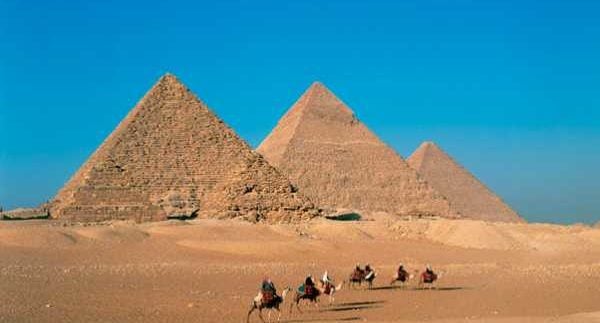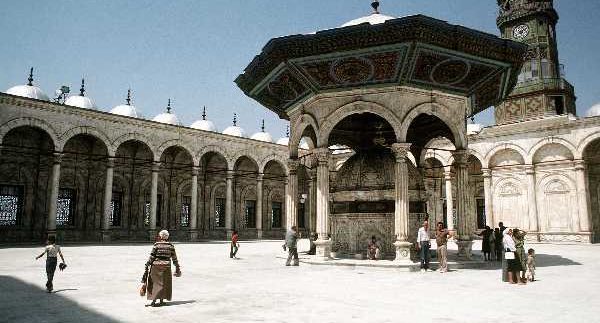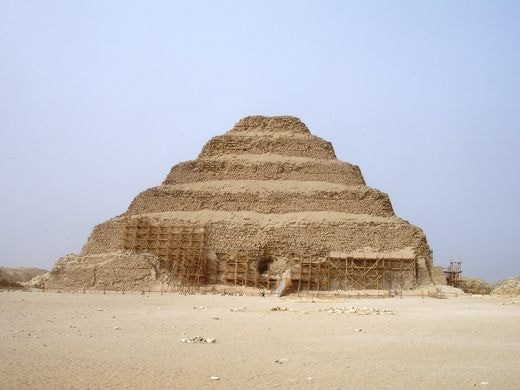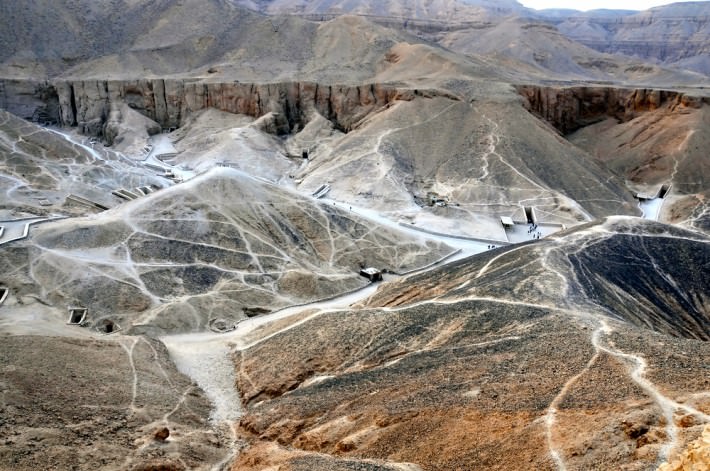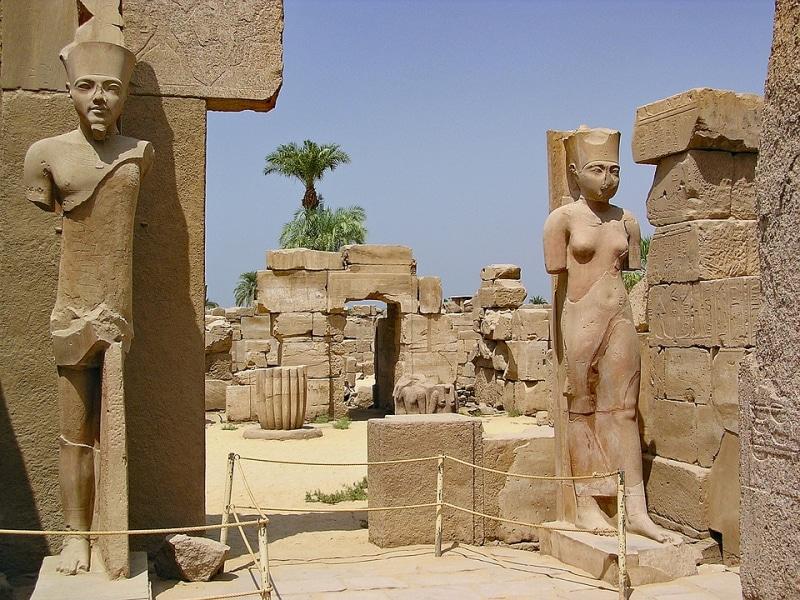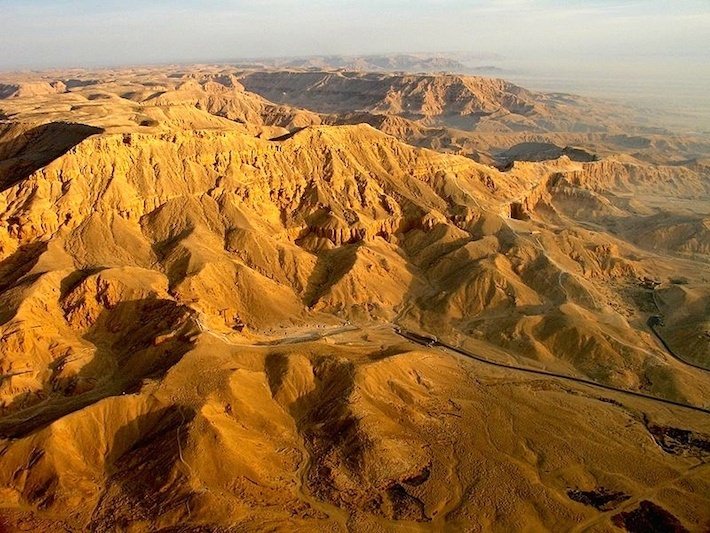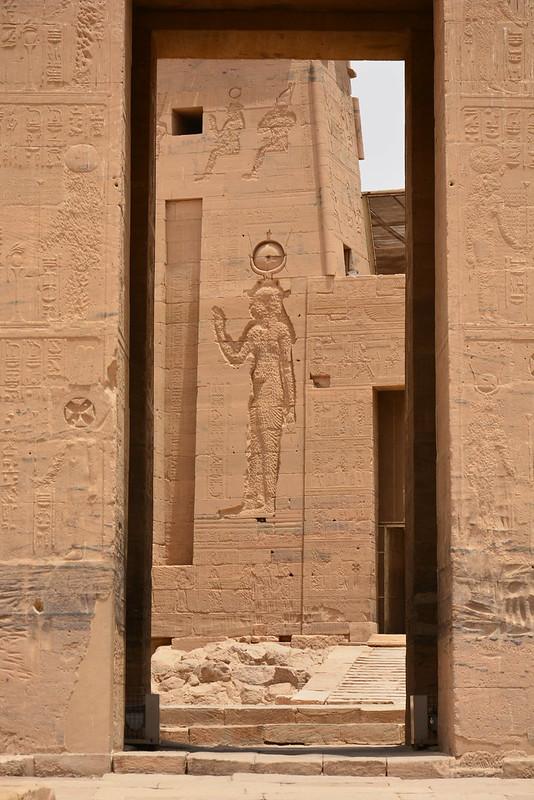HistoricalSites, Egypt
Removed from Unnamed collection
The Great Pyramids of Giza
There are three major pyramids in the pyramids necropolis in Giza. If you do not fear small spaces, take the opportunity to step inside the small cavity of the Great Pyramid (for a negotiable tip or fee) to experience the pyramid’s rather daunting descending staircase as well as the king’s and queen’s respective burial chambers.
The Great Pyramid of Khufu is believed to have been built over a twenty-year period and completed around the year 2560 B.C. For centuries, the Pyramid held the record as the tallest
man-made structure in the world. Besides the many theories and symbolism that it embodies, the Pyramid is one of the most breathtaking monuments of Ancient Egypt; take a trip to gaze at its peak and see for yourself.
Although not as magnificently large as the Great Pyramid of Khufu, the Pyramid of Khafra has a more complex interior and a large number of statues dedicated to Khafra, son of Khufu,
including the Sphinx.
The smallest of the three, the Pyramid of Menkara rarely gets the same attention as its two larger neighbours; as it lacks the size of Khufu and the Sphinx of Khafra. Menkara’s one advantage may be its material: the two predecessors used limestone, whereas Menkara used the more valuable and pricier granite in his burial chambers. https://www.cairo360.com/article/sights-travel/the-great-pyramids-of-giza-egypts-seventh-wonder-of-the-ancient-world/
Map
Removed from Unnamed collection
Cairo Citadel
As familiar and known a sight as that of the Giza Pyramids, the medieval Citadel sits conspicuously over the haze of Cairo’s minarets, with the Mohammed Ali mosque glimmering like a beacon to all travellers, visitors and Cairenes alike. The gentle breeze from the hilltop location brings to mind a legend about Saladin, the builder of this medieval fortress in the 12th century. In the search to build a proper fortress against the Crusaders, he hung pieces of meat throughout Cairo and swore that wherever the meat stayed fresh the longest would become the location of his fortress. All the meat he placed was ruined in a day except for the meat hung on a hilltop near Cairo, where the fresh breeze kept the meat fresh for days. Who knows? Maybe he built the Citadel on a hill because in his native mountainous Syria most fortresses were built in strategic high locations, or maybe fresh meat was a big deal to Saladin.
The Citadel is a popular destination for tour groups and local school field trips. While most tourists are taken to the Hagia Sophia inspired Mohammed Ali mosque, they might miss the great sites that lie nearby, marking massacres, harem palaces, spiral wells, royal court drama, crime, and ancient Egyptian ruins. https://www.cairo360.com/article/sights-travel/the-citadel-cairos-ancient-fortress/
Map
Removed from Unnamed collection
Pyramid of Djoser
Built as a tomb for the pharaoh Djoser (or Zoser), the Djoser Pyramid was constructed between 2630 BC and 2611 BC in Saqqara, Egypt. Although it is considered the world’s oldest intact large-scale stone monument, the ancient structure is often overshadowed by Egypt’s most famous pyramids.
The Djoser Pyramid stands 197 feet high and was built using 11.6 million cubic feet of stone and clay. Imhotep—a doctor, priest, and sculptor, among other titles and talents—is widely attributed as the pyramid’s architect. Initially, the structure was designed as a traditional, flat-roofed tomb called a mastaba, but Djoser wanted something bigger, something grander.
The pyramid was part of a larger 40-acre complex containing a courtyard, temples, and chapels, all enclosed inside a 30-foot wall. The entrance to the complex, as well as 13 fake doors, is built into the wall. The complex also includes a number of building facades, all of which served ritual purposes.
The pharaoh’s burial chambers are located deep within the pyramid, along with those of his 11 daughters. The burial chamber is part of the pyramid’s winding, maze-like series of tunnels, which researchers think may have been designed to prevent theft (although the pyramid was eventually looted). https://www.atlasobscura.com/places/pyramid-of-djoser
Map
Removed from Unnamed collection
Valley of the Kings
Valley of the Kings is without question one of the most historically significant archaeological sites in the world. For roughly 200 years, archaeologists have been exploring the site, and during this time they have discovered 65 ancient tombs, with the latest discovery being made in 2008. The valley is essentially a royal necropolis that was used by the rulers of Egypt for a period of 500 years.
Being a “royal necropolis” the area was reserved for the burial of Egypt’s New Kingdom pharaohs and a few lesser nobles. However, not all the tombs were actually used for burial purposes. Instead, several of them simply remained vacant.
The Valley of the Kings is one of Egypt’s biggest tourist attractions, with an average of around 5,000 people visiting the site each day. On days when Nile River cruise ships dock in Luxor, the number of tourists can climb to as many as 9,000. It is without doubt one of the most fascinating places in all of Egypt. https://www.egypttoursplus.com/valley-of-the-kings/
Map
Removed from Unnamed collection
Karnak Temple
Karnak Temple is actually a vast temple city, with many of its structures dating back 4,000 years. It is today the largest remaining religious site of the ancient world, and it is visited by thousands of tourists every year. Because of its immense popularity, it is featured in many Egypt vacation packages, including many Nile cruise holidays.
The temple complex is conveniently located near to the modern-day town of El-Karnak, just 2.5 km from Luxor. The site is massive, to the point where some people feel it’s necessary to spend at least one full day exploring the area. It’s also a good idea to have a guide with you when you visit.
As with so many things at Karnak Temple complex, the hypostyle hall is massive, covering an area of 54,000 square feet, and home to no less than 134 huge columns measuring 23 meters in height. It is only when you actually stand inside the hall amongst its forest of columns that you truly get to appreciate just how wealth the New Kingdom had and to what extend Amun was revered. https://www.egypttoursplus.com/karnak-temple/
Map
Removed from Unnamed collection
Luxor Temple
Luxor Temple is one of six ancient temples found in the vicinity of Luxor. It was built by Amenophis III for worshipping the gods Amun, Chons and Mut.
The Temple of Luxor is placed firmly on the tourist trail in Egypt, attracting many thousands of visitors each year. It is one of six ancient temples in and around the city of Luxor in Upper Egypt, in the area that was once home to the ancient city of Thebes. The temple was initially built for religious rites to the gods Amun, Chons and Mut.
One of the most awe-inspiring features at Luxor Temple is it imposing colonnade comprising a total of 14 columns that are topped with papyrus shaped capitals. Each column is roughly 23 meters high, with a circumference of around 10 meters. Both sides on the colonnade are enclosed with masonry walls that are covered with reliefs showing scenes relating to the festival of Opet. The colonnade, along with the decorated walls was completed during the reign of King Tutankhamun and King Horemheb. https://www.egypttoursplus.com/luxor-temple/
Map
Removed from Unnamed collection
Hatshepsut Temple
Queen Hatshepsut Temple is a mortuary temple located near the Valley of the Kings, and it is today considered to be one of the great wonders of Ancient Egypt.
Hatshepsut Temple is without question one of the most striking ancient attractions in all of Egypt. In fact, it is one of only a handful of Egyptian attractions that are considered to be “incomparable monuments of Egypt” and many historians also refer to it as being one of the Wonders of Ancient Egypt.
Visitors to Luxor in upper Egypt will find this magnificent temple located below the rocky cliffs at Deir El Bahari, just a short distance away from the infamous Valley of the Kings, on the Luxor West Bank of the Nile River. From the moment the temple comes into view, it becomes very obvious that Queen Hatshepsut, an 18th dynasty pharaoh, wanted a temple that was well and truly fit for a queen. https://www.egypttoursplus.com/hatshepsut-temple/
Map
Removed from Unnamed collection
Valley of the Queens
The Valley of the Queens, like the nearby Valley of Kings, is also an ancient royal necropolis where the wives of the great pharaohs were laid to rest from 1550 to 1070 BCE. During the time of the New Kingdom pharaohs, the area was called Ta-Set-Neferu which means “The Place of the Children of the Pharaoh”.
Although the name Valley of the Queens tends to suggest that only queens were laid to rest here, the area was also used for the burials of princes; princesses and other family members of the nobility. The necropolis is located on the West Bank of the Nile, more or less directly opposite the ancient capital city of Thebes, which today is the modern city of Luxor.
The Valley of the Queens is home to around 70 tombs, many of which are exquisitely decorated. A prime example would be the tomb of Queen Nefetari from the 19th dynasty. Her tomb is adorned with splendid polochrome reliefs which have remained intact through the ages and can still be appreciated to this day.
Tourists that are intending visiting the site should keep in mind that only a limited number of tombs are open to visitors. The beautiful tomb of Queen Nefetari is not open, but special permission can be obtained from the Commercial and Event Office in Luxor for a fee. The tomb belonging to the wife of King Ramesses II is strictly off-limits altogether. This is considered to be the most beautiful tomb discovered, but because of its fragile condition, officials feel that heavy tourist traffic could cause irreparable damage. https://www.egypttoursplus.com/valley-of-the-queens/
Map
Removed from Unnamed collection
Landious Travel
Landious Travel is a tour operator based in Egypt. The tourist company “Landious Travel” presents you with a long list of Services & Tours in Egypt. You can book transfers, Nile cruises, tours, and excursions in Egypt in this online shop. Such services are available in all the Egyptian cities e.g. Hurghada, Safaga, Sharm El-Sheikh, El-Quseir, Marsa Alam, Luxor and Cairo. Mainly, we make bookings on several touristic services e.g. excursions, trips, Egypt tours, Nile Cruises and transportation.
Map
Removed from Unnamed collection
Temple of Kalabsha
Walk along an imposing stone causeway that leads from the banks of the lake to the first pylon of the temple, pass a colonnaded court and into the eight columned hypostyle hall. Note the hieroglyphs and the reliefs of Greek pharaohs paying homage to Ancient Egyptian deities. Look for Mandulis, the god clad in the vulture feathered cloak. Built during the late Ptolemaic period and completed during the reign of the Roman emperor Augustus, the Temple of Kalabsha was dedicated to the Nubian god called Mandulis. http://www.egypt.travel/en/attractions/temple-of-kalabsha
Map
Removed from Unnamed collection
Philae Temple
Philae is dedicated to Isis - the Goddess of motherhood, magic and fertility. As a symbolic mother of the king, she appears as a woman with a throne-shaped crown or sometimes depicted with the sign of motherhood and fertility: the two horns and the solar disc between them. Her cult spread over Europe since the Greco-Roman period.
The cult of Isis at Philae goes back to the 7th century BC, but the earliest remains date from the 4th century BC.
And Isis was being worshipped at Philae until the 6th century AD!
By Roman times Isis had become the greatest of all the Egyptian gods, worshipped right across the Roman Empire even as far as Britain. http://www.aswan-individual.com/html/philae.html
Map

